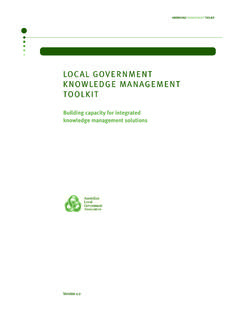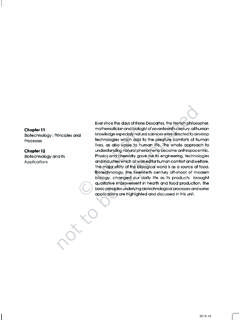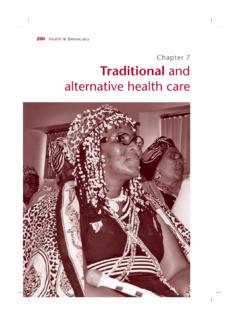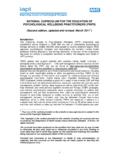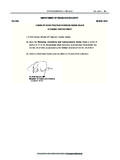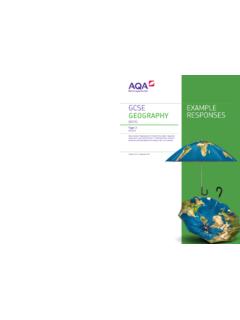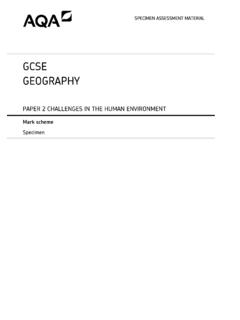Transcription of INSIGHT ISO 44001 - Institute for Collaborative Working
1 INSIGHT INTOISO 44001 The International Standard for Collaborative Business RelationshipsInstitute forCollaborativeWorking2 Institute forCollaborativeWorkingAbout ICWE stablished in 1990 as a joint initiative between the then Department of Trade and Industry DTI (now BEIS - Business Energy and Industrial Strategy) and the Confederation of British Industry (CBI) to promote and encourage Collaborative Working as Partnership Sourcing the Institute was formally renamed in 2012 to reflect the growing recognition of Collaborative Working and the need to support the development of the skills required to harness the benefits of these is totally self-financing operating as a not-for-profit organisation.
2 The Institute s continuing role is to help organisations, large and small, in both the public and private sectors, to build and develop effective competitive business relationships based upon a Collaborative approach. The Institute provides practical guidance based on a wide portfolio of experience utilising knowledge from extensive relationships within the commercial, Government and academic arenas. ICW is recognised as the thought leaders and driving force behind the development of ISO 44001 . The CRAFT methodology developed from the collective experience of the ICW knowledge network was the foundation of the BS11000 Collaborative Business Relationship Framework as the world s first Standard in relationship management - which was the foundation for the International standard ISO 44001 .
3 ICW continues to work with subject matter experts to support the evolution of ISO 44001 and Collaborative Working by supporting organisations to effectively implement a structured approach, developing the skills and research in collaboration with academia. All of which it drives towards our:VisionCollaborative Working recognised as a professional business disciplineObjectives To evolve a structured methodology to underpin effective business relationships To be acknowledged as the thought leader on business Collaborative Working . To carry out research to develop Collaborative Working principles, practices and process.
4 To develop Collaborative Working skills through training and development To progressively build a global Collaborative Working knowledge sharing community3 Institute forCollaborativeWorkingThe Journey to ISO 44001 From its creation in 1990 the Institute for Collaborative Working (ICW) has been focused on promoting the adoption of Collaborative Working applications to enhance organisations, large and small, performance and competitiveness. Since those early days the Institute and its members have built up an extensive knowledge base of practical experience. In 2003 in order to consolidate this knowledge and to provide a structured approach and robust strategic route map for implementing collaboration the CRAFT methodology was established.
5 The eight stage CRAFT life cycle model which formed the basis of this approach became the foundation for a systemic approach to collaboration. It logical step by step guide from strategic concept to Exit of relationship was recognised as methodology that would enable organisations to blend both processes and systems to underpin the cultures and behaviours required for successful collaboration and embedding these principles into business as usual. Around this same period ICW was engaged in a research project looking at the shape and constraints for future business models.
6 The publication of Future Connections highlighted the growing trend towards a wide variety of integrated operational approaches including outsourcing, alliances, partnerships and networks designed to either divest non-core activities or build capability through eternal relationships. The challenge in each of these models was the need to harness and manage the underpinning relationships which historically were personal rather than being sustainably embedded in the organisations. In recognising this interaction that provided the catalyst for discussion between the Institute and the British Standards Institution (BSI).
7 Subsequent research by BSI identified that whilst there where many engagement models there was no common approach or structure that was readily available. The decision was taken to develop a Publicly Available Specification based on the thought leadership of ICW and the CRAFT methodology. Thus in 2006 PAS 11000 was published the world s first standard for Collaborative business relationships. As organisations began to appreciate the value of the systemic approach and a common language they also started to consider if Working to these principles could be independently validated.
8 Once again ICW and its members Working with BSI piloted a certification process. The success of the initial trails and interest from major organisations prompted the decision to take the knowledge and produce a full British standard with the ICW leading the development. BS 11000 was subsequently published in 2010 established the world s first national standard for collaboration. Within 3 years based on increasing interest from around the world driven by organisations taking the UK experience abroad BSI with support from the Institute approached the International Standards Organisation (ISO).
9 Led by ICW work started in 2013 to develop and international standard backed by twelve countries spanning America, Europe and Asia. In 2016 the final draft was accepted and ISO 44001 was born with publication early 2017. ICW is proud of its contribution to this journey and continues to support further developments whilst helping organisations and individuals harness the power of Collaborative forCollaborativeWorkingContents1. Why an international standard 2. The High level structure of management systems i the relationship life-cycle ii common themes 3. Significant changes from BS 110004.
10 Corporate Management systems (clauses 1- 7)5. Operational life-cycle (clause 8)6. Performance and auditing (clause 9-10)7. Requirements check list 8. Benefits of Working with ISO 440019. Positioning Relationships10. Getting started 11. Frequently asked questions12. ICW development courses The move to ISO 44001 shows the significance and influence the standard is having across wider industry and academia, where the adoption of an international standard can only help to further professionalise B2B Collaborative Working and the benefits it delivers. Capita PLC Strategic Business Partner to the Defence Infrastructure Organisation5 Institute forCollaborativeWorking1.
